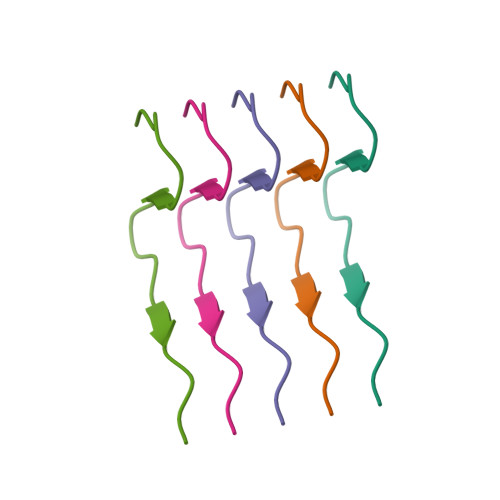The amyloid structure of mouse RIPK3 (receptor interacting protein kinase 3) in cell necroptosis.
Wu, X.L., Hu, H., Dong, X.Q., Zhang, J., Wang, J., Schwieters, C.D., Liu, J., Wu, G.X., Li, B., Lin, J.Y., Wang, H.Y., Lu, J.X.(2021) Nat Commun 12: 1627-1627
- PubMed: 33712586
- DOI: https://doi.org/10.1038/s41467-021-21881-2
- Primary Citation of Related Structures:
6JPD - PubMed Abstract:
RIPK3 amyloid complex plays crucial roles during TNF-induced necroptosis and in response to immune defense in both human and mouse. Here, we have structurally characterized mouse RIPK3 homogeneous self-assembly using solid-state NMR, revealing a well-ordered N-shaped amyloid core structure featured with 3 parallel in-register β-sheets. This structure differs from previously published human RIPK1/RIPK3 hetero-amyloid complex structure, which adopted a serpentine fold. Functional studies indicate both RIPK1-RIPK3 binding and RIPK3 amyloid formation are essential but not sufficient for TNF-induced necroptosis. The structural integrity of RIPK3 fibril with three β-strands is necessary for signaling. Molecular dynamics simulations with a mouse RIPK1/RIPK3 model indicate that the hetero-amyloid is less stable when adopting the RIPK3 fibril conformation, suggesting a structural transformation of RIPK3 from RIPK1-RIPK3 binding to RIPK3 amyloid formation. This structural transformation would provide the missing link connecting RIPK1-RIPK3 binding to RIPK3 homo-oligomer formation in the signal transduction.
Organizational Affiliation:
School of Life Science and Technology, ShanghaiTech University, Shanghai, PR China.


















